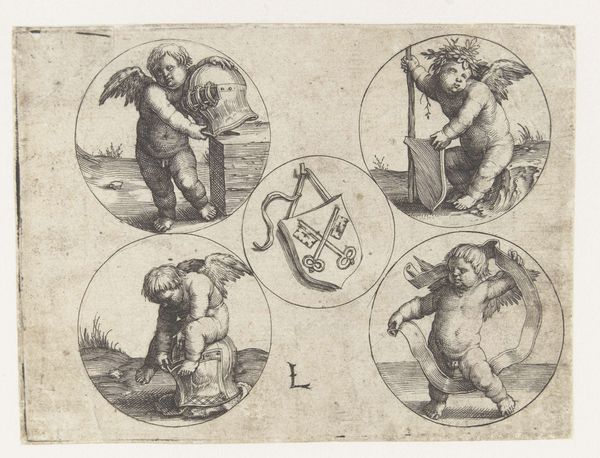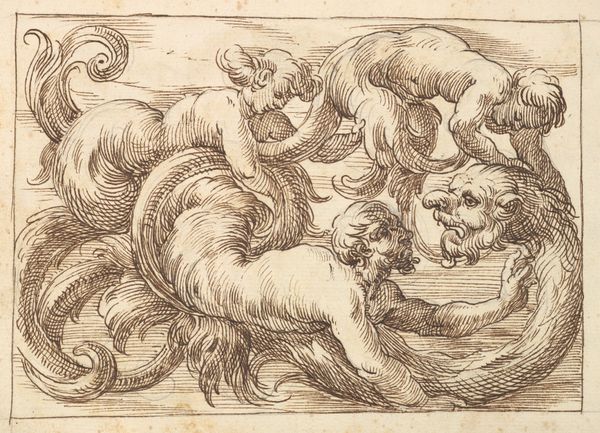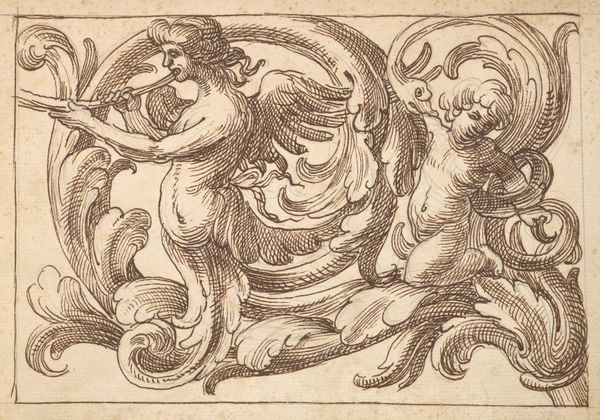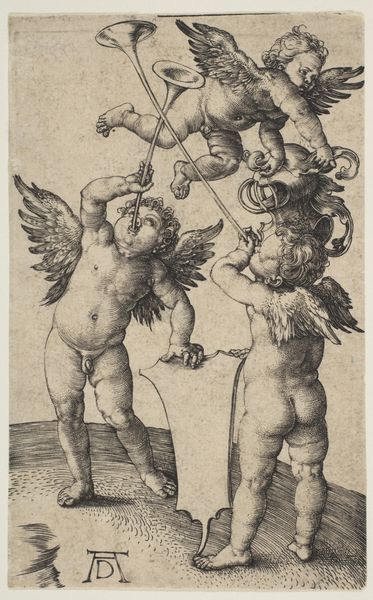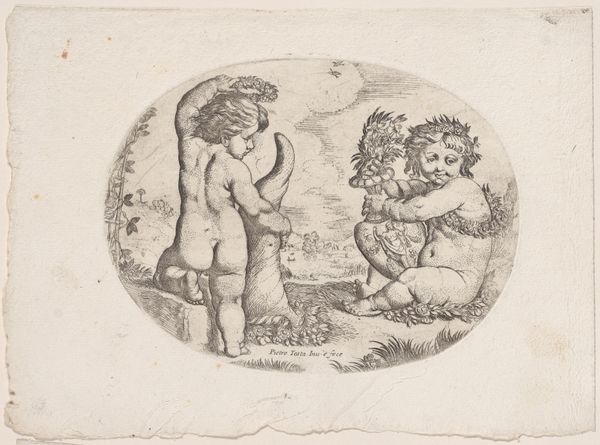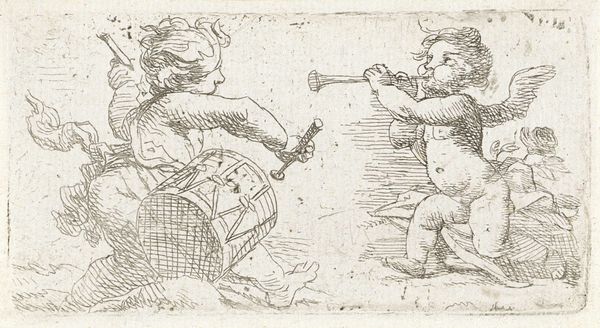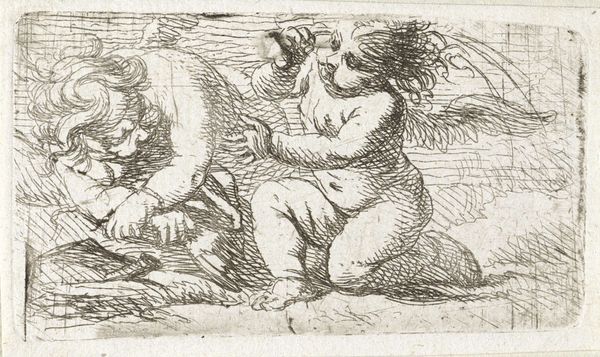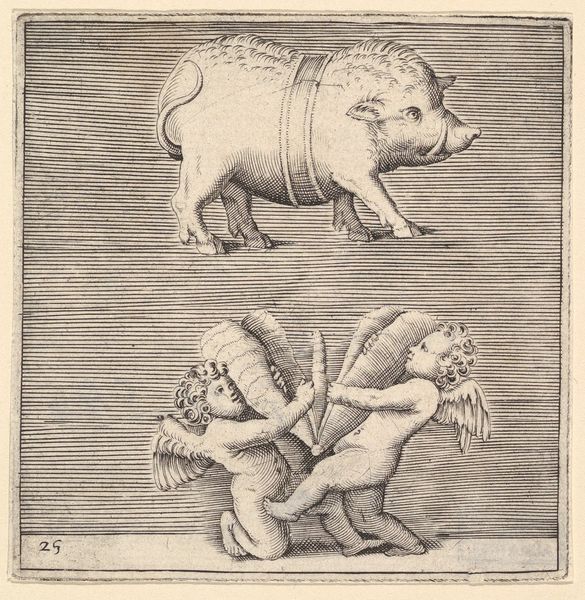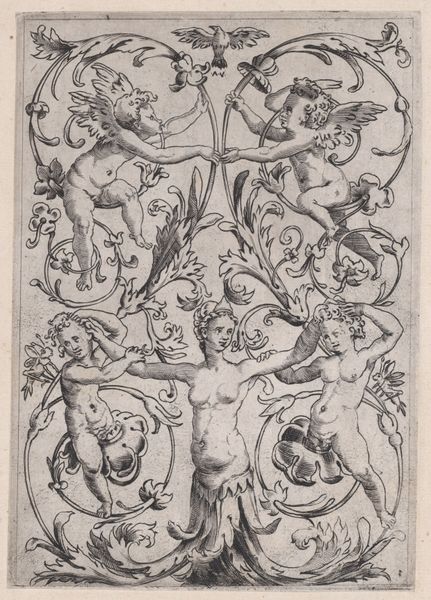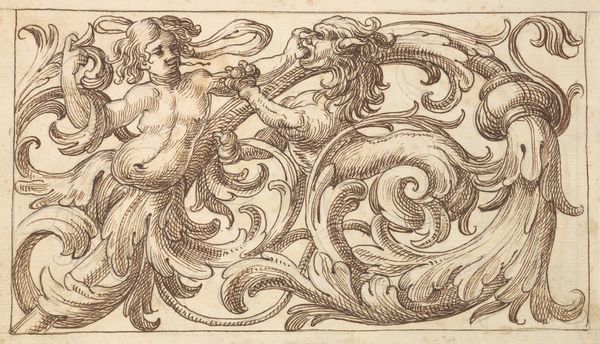
print, engraving
#
allegory
# print
#
figuration
#
11_renaissance
#
northern-renaissance
#
engraving
Copyright: National Gallery of Art: CC0 1.0
Curator: This engraving, titled "Two Cupids in Two Circles," was created around 1517 by Lucas van Leyden. It's a remarkable example of Northern Renaissance printmaking. My first impression is how playful it appears, but almost unnervingly so. Editor: Playful, yes, but I’m more intrigued by the process. Consider the technical skill involved in creating these miniature scenes on a metal plate and reproducing them. The tooling, the inking, the pressure—it speaks to a sophisticated workshop practice. It makes me wonder who these prints were made for, and who was consuming them? Curator: The market for prints in the 16th century was fascinating. They were relatively affordable, which democratized access to imagery and knowledge. I think the allegory of the piece speaks to social relationships of love, perhaps as commissioned work intended for wedding or engagements announcements for certain noble families. The image has love and marriage central as two parts of it. Editor: I'd consider the material. These prints were not meant to be singular pieces, and rather, items with different commercial uses. I think the social implication comes from their material and dissemination processes. These engravings democratized the act of collecting for merchant classes interested in engaging art consumption to better align themselves with upper classes, through prints, heraldry and announcements. Curator: Certainly, there's a relationship to the wider context. And within this little frame we're discussing, that juxtaposition comes alive; what’s striking is to see the love portrayed here in action, in real and idealized manners that come together from those two realms that you described. The contrast contributes to the social significance of the overall work. Editor: I see what you mean; it goes back to the print production and consumption then. Curator: Indeed. So, considering that aspect that is so central to what is displayed, one can better explore the context from where it stems. Editor: This piece, it seems, acts as a lens through which we can examine both the production and reception of art, shedding light on the evolving dynamics of the art market in the Renaissance. Curator: Exactly, and also, our own approaches to how we view works within different interpretive prisms.
Comments
No comments
Be the first to comment and join the conversation on the ultimate creative platform.
